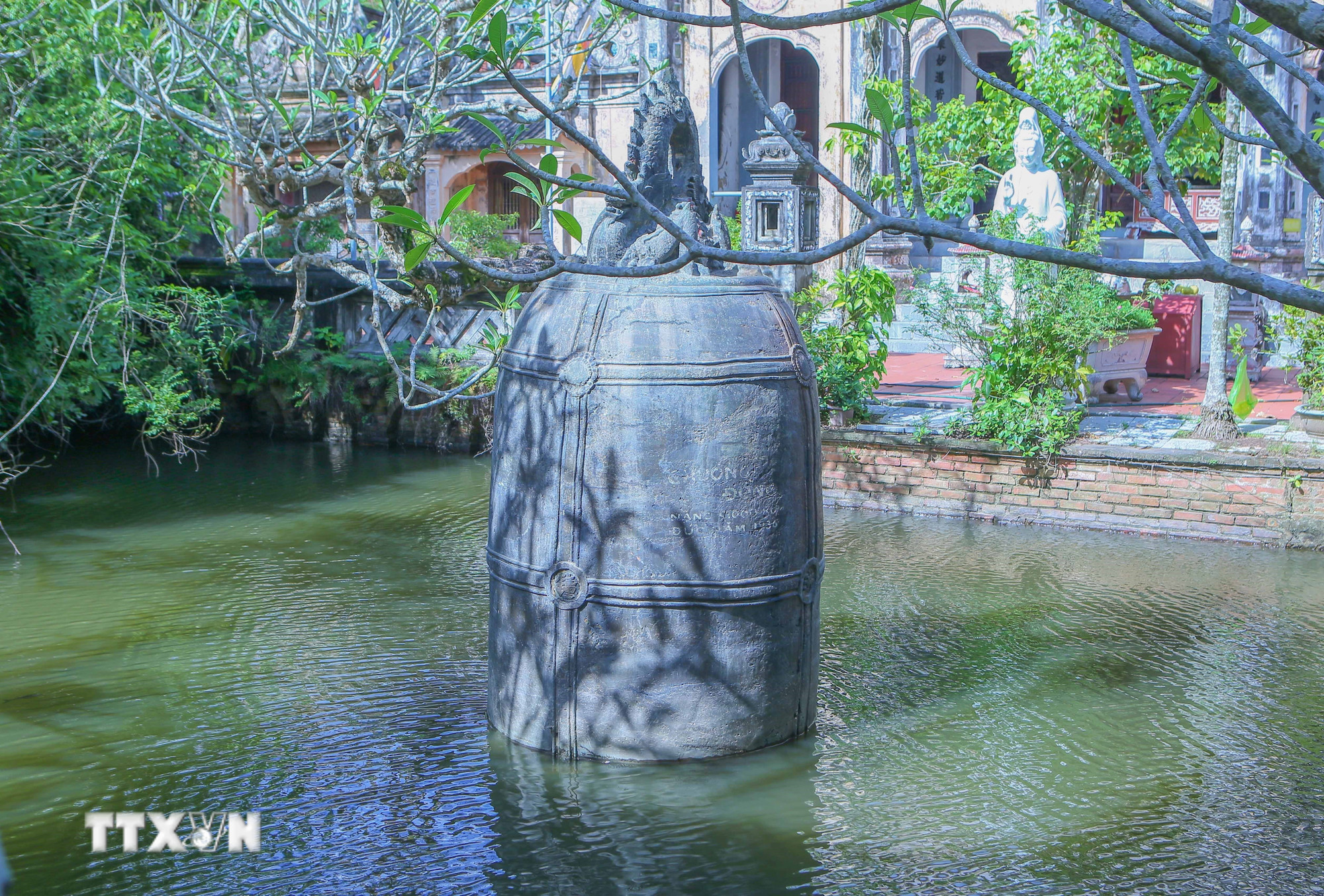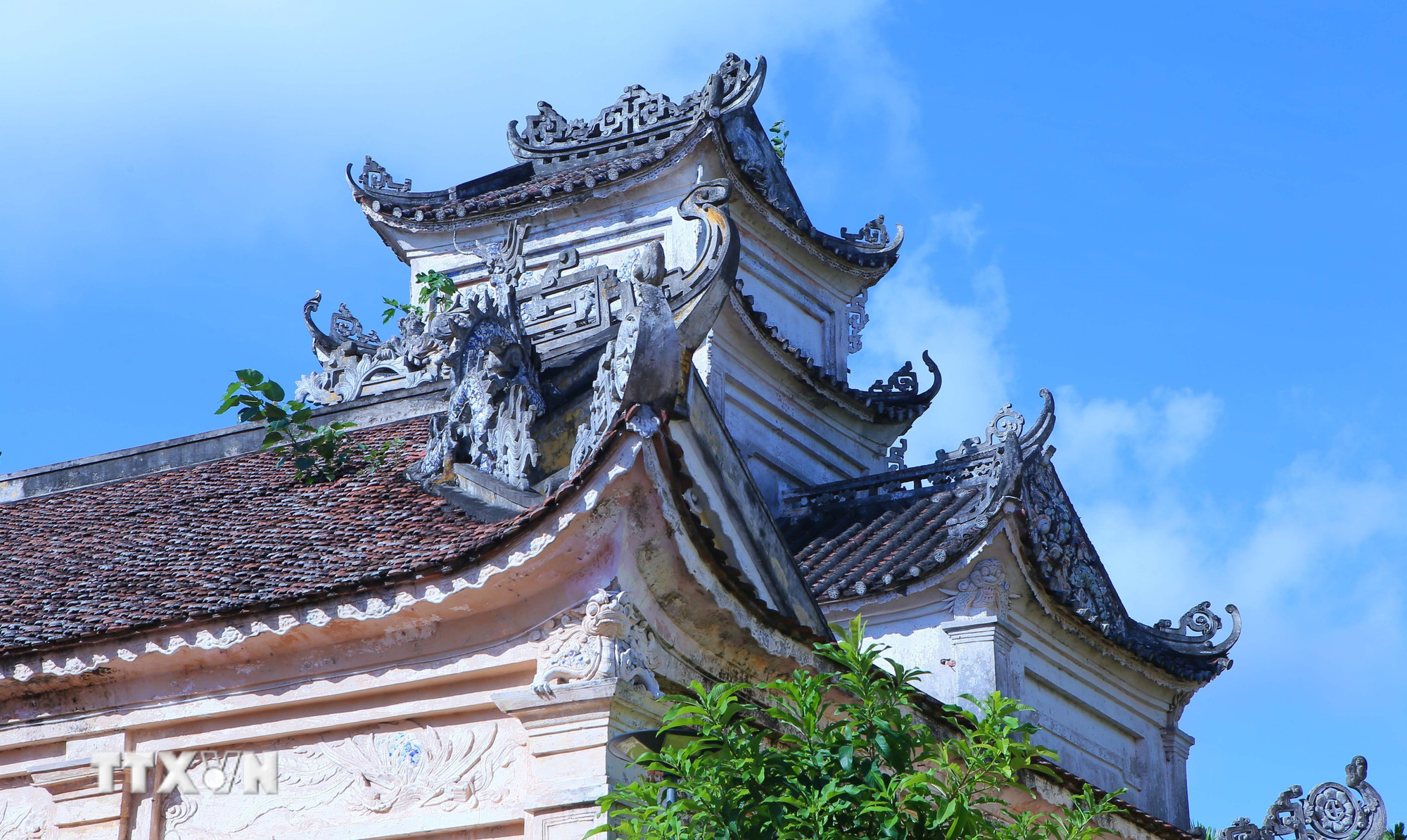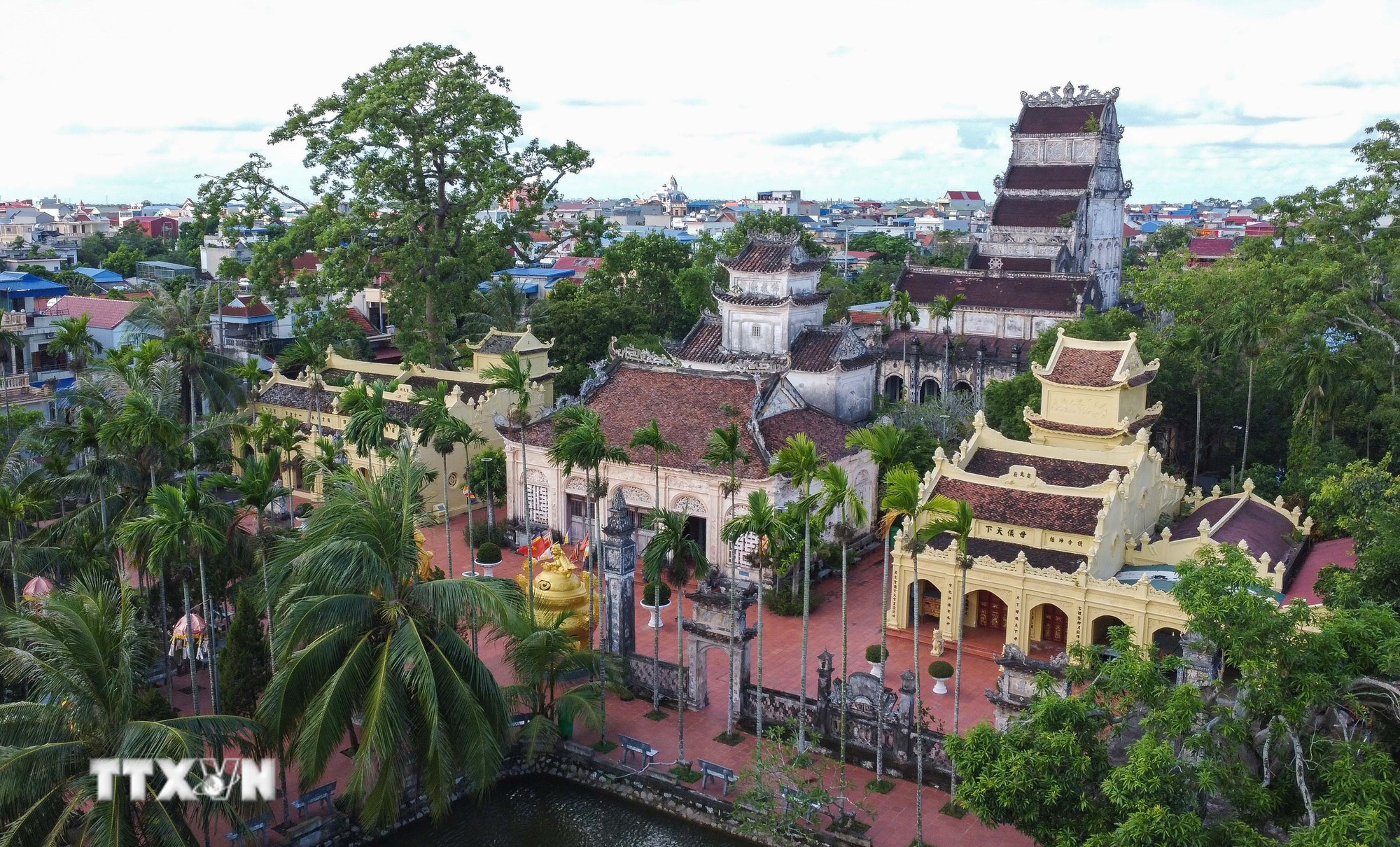The historical and architectural relic of Co Le Pagoda, Co Le Commune, Ninh Binh Province has just been ranked as a Special National Monument by the Prime Minister.
This is not only the highest recognition by the State for the outstanding value of the relic in history, but also opens up opportunities to develop cultural and spiritual tourism, creating momentum for local socio -economic development.
Special historical and architectural value
Co Le Pagoda, also known as "Than Quang Tu", was built in the 12th century during the reign of Ly Than Ton. The pagoda worships Buddha and Saint Nguyen Minh Khong.
According to Venerable Thich Tam Vuong, Abbot of Co Le Pagoda, the pagoda was previously designed with wood in ancient architecture, however over time, the architecture in the pagoda gradually deteriorated.
In 1902, the pagoda was restored and rebuilt. After many restorations and renovations, the pagoda's scale was also expanded, bearing the strong Buddhist architectural identity.
The highlight of Co Le Pagoda is the Nine-Piece Lotus Tower, designed and built in 1927, in the form of a multi-storey architecture rising gradually into the air, bearing the characteristics of Buddhist architecture. The tower has an octagonal cross-section of 11 floors, including 1 base floor, 1 top floor and 9 lotus floors.
In addition, the Nine Lotus Tower is also decorated with many unicorns, phoenixes and 6 pairs of dragons clinging to the tower body, each pair playing with each other, the one in front looking down, the one below looking up. The base of the tower is represented by a large turtle floating in the middle of a lake, symbolizing the stability and longevity of Buddhism.
Co Le Pagoda is surrounded by a small lake, the temple grounds include many different architectural works such as: Tam Quan, Main Hall, Bao Thap, To House, Tran Hung Dao Temple, Mau Palace...
The pagoda was built in the style of "Buddha first, Saint later" with reliefs such as dragons and phoenixes, knife-shaped roofs, lotus flowers, and rolled roofs...
The materials used to build the pagoda were very rudimentary such as bricks, lime, mortar, molasses, and salt. The pagoda's architecture is a harmonious combination of traditional Vietnamese sculpture and the influence of early 20th century Western architecture, creating a unique appearance, rare in the Vietnamese pagoda system.

In the middle of the lake in front of the main hall of Co Le Pagoda, there is a bell weighing 9,000 kg, 4.2 m high, 2.2 m in diameter, 8 cm thick, called Dai Hong Chung bell. The mouth of the bell has lotus petal motifs, the body has flower, leaf, river motifs and some Chinese characters.
Ms. Nguyen Thi Tam, a Buddhist in the pagoda, said that this bell was cast by contributions from the people and Buddhists. Right after it was finished, the war broke out. To protect the bell, the pagoda decided to immerse it in the lake.
In 1954, the bell was salvaged and hung in the middle of the lake for people and tourists to visit and worship.
Not only having historical, cultural and architectural significance, Co Le Pagoda is also a revolutionary relic. During the two resistance wars against French colonialism and American imperialism, 27 monks in the pagoda "took off their cassocks and put on their armor to go to battle" to protect the Fatherland.
During the resistance war, the “Buddhist martyrs” fought bravely and achieved many outstanding feats. In addition, Co Le Pagoda was also a secret place to hide cadres, guerrillas and main force soldiers.
This is also where important meetings to direct local revolutionary activities took place. After peace was restored, this place became a historical “witness”, a “red address” symbolizing the nation’s revolutionary tradition.

Promoting heritage effectively
In 1988, Co Le Pagoda was ranked as a historical and cultural relic and a national scenic spot by the Ministry of Culture and Information (now the Ministry of Culture, Sports and Tourism).
On September 10, 2025, the Prime Minister issued a Decision to rank the special national monument (phase 18), in which Co Le Pagoda was officially recognized as a special national historical and architectural relic. This is an honor for Vietnamese Buddhism in general and the people of Ninh Binh in particular.
Mr. Nguyen Quang Thao, Secretary of the Party Committee of Co Le commune, said that Co Le pagoda is not only a place to worship Buddha, but also a place associated with the spiritual life of local people for many generations.
This is a cultural convergence point, a place to hold traditional festivals, and nurture the compassionate spirit of Buddhism. The pagoda's ranking as a special national monument is the basis for the pagoda to continue to be invested in research, preservation, and promotion to become a cultural and spiritual destination for people and tourists.
Every year, from the 13th to the 16th of the 9th lunar month, the Co Le Pagoda festival is solemnly held with unique cultural activities such as: Buddha procession, wrestling, human chess, boat racing, puppetry performances... attracting a large number of Buddhists, locals and tourists.
The activities in the festival reflect the rich and diverse intangible cultural heritage of customs, practices and religious beliefs, contributing to demonstrating the strength of community solidarity and expressing the nation's morality of "When drinking water, remember its source".
In recent years, schools in Co Le commune and neighboring localities have developed and implemented plans to organize sightseeing and learning activities for students on the occasion of the traditional festival day, helping students enrich their knowledge of history, culture, and national traditions, arousing love and pride in history, and forming measures to protect, preserve and promote the value of relics.

Secretary of the Co Le Commune Party Committee Nguyen Quang Thao said that in the coming time, the locality will coordinate with Co Le Pagoda to focus on improving the operational efficiency of the Relic Management Board, maintaining and enhancing traditional festivals, and organizing tourism connections with other cultural heritages in the province.
The commune also continues to promote socialization, mobilizing organizations and individuals to participate in preserving and restoring relics according to the principle of preserving original values, while promoting and raising awareness of the community in preserving and promoting the value of historical and cultural relics in the locality./.

Source: https://www.vietnamplus.vn/phat-huy-gia-tri-van-hoa-di-tich-quoc-gia-dac-biet-cua-chua-co-le-post1062083.vnp





![[Photo] National Assembly Chairman Tran Thanh Man attends the inauguration ceremony of the Memorial Site of National Assembly Standing Committee Chairman Bui Bang Doan](https://vphoto.vietnam.vn/thumb/1200x675/vietnam/resource/IMAGE/2025/9/28/6feba23492d14b03b05445dd9f1dba88)






























































































Comment (0)